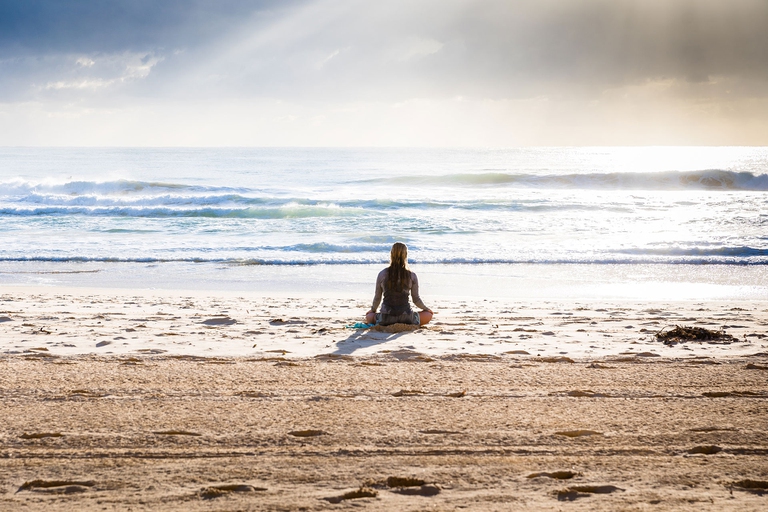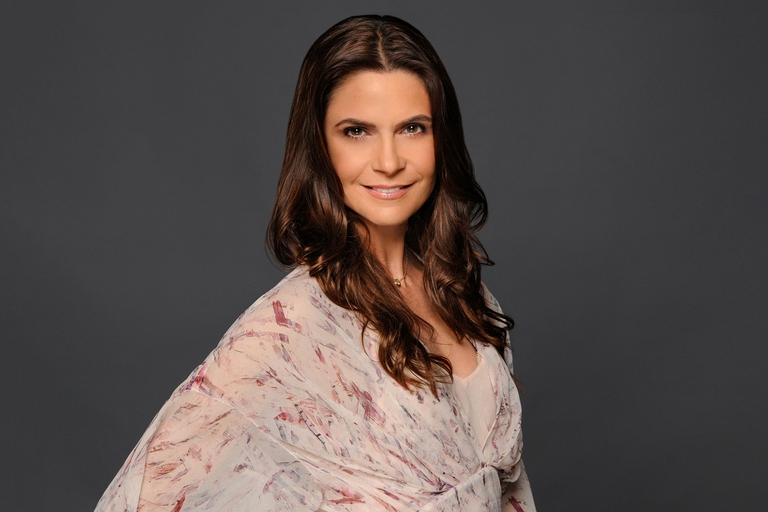
Niseko, Toya-Usu and Shiraoi are three Hokkaido destinations for travellers who want to feel close to the communities they’re visiting.
We talked to World Happiness Summit organiser Karen Guggenheim about the connection between the planet’s health and our happiness.
The pandemic has taught us the importance of social connection and contact with nature, two things that contribute majorly to our happiness and must be preserved to ensure our good health. But how can happiness be measured? The best-known monitoring method is the World Happiness Report, endorsed by 150 countries. In March 2021, an Italian association called Ricerca Felicità also published its first in-depth report on the situation in Italy. However, one further question remains. What is happiness, really?
We put this question to Karen Guggenheim, founder of WOHASU, the organisation responsible for the World Happiness Summit. This event brings together leading experts in the fields of psychology, well-being, mindfulness, sustainability, and economics, with the goal of helping people to be happier. As Guggenheim will tell us, the goal is not to always be happy, because this isn’t possible. Rather, it’s about learning to accept and overcome negative moments so as to better appreciate our lives in their entirety.
How has the idea of happiness changed because of the pandemic?
I think that the pandemic has brought the idea of happiness to the forefront. It’s funny because I first thought that, in announcing the next World Happiness Summit, which we will have in March 2022, there would be some pushback on the word happiness. Actually, it’s quite the opposite. People very much want to be happy, now more than ever.
It’s important to note that, when we talk about happiness, we’re not only talking about pleasure. It’s about meaning, purpose, engagement, relationships, connections. I think that the pandemic, and certainly quarantine, has highlighted the importance of social connections and being with other people, things that perhaps we took for granted before. It has really brought to the forefront the fact that people want to live their life with meaning and with purpose.
How can happiness be measured?
There are different measurement tools for happiness. Those used by Gallup to draft the World Happiness Report measure life satisfaction, trust in institutions and governments, how much people look forward to events in their lives. They’re really self-evaluatory measurements. I think that we also need to bring more of a cultural context because not all societies define happiness in the same way. For example, in the West it’s more to do with pleasure, and in the East it’s more about contentment and being calm.
One of the questions the people surveyed are asked is about excitement, but in some cultures being excited is good, while in others it’s bad. This is why it’s very important to understand the cultural context. I think the measurements have been great for starting the conversation about measuring civic well-being, but then we have to fine-tune it to specific localities and cultural contexts.
More and more people are now talking about “toxic positivity”. What does this mean?
I’m very perplexed by this. I think what they mean is the pressure to be happy all the time, but this is a misunderstanding, not only of happiness but of life. You cannot experience pleasure all the time. Life doesn’t work like that. For me, it’s about how you experience life. Life has challenges and has wonderful parts, worrying parts, exciting parts, etc. How do you frame your life to be able to value the things that you have and optimise your experiences?
In that discourse, you’re also missing the other side of the coin. What about toxic negativity? What about being negative all the time? That is not a real sense of reality. Reality has negative parts and positive parts, and neutral parts. The way that we interpret reality is subjective.
Even with a horrible, tragic event like the pandemic, there are ways in which you can decide to deal with something outside of your control in a more positive way. That doesn’t mean saying “oh, it’s good that Covid’s here”, but rather, now that it is here, to decide to frame it in a different way: I’m spending more time with my family, I’m more self-aware, I’m more in touch with people in my life.
I think that this debate around toxic positivity is a misunderstanding of what positivity is. Positive psychologists never say you’re meant to be happy all the time. You can’t be positive all the time, and when you’re feeling negative you can get out of it, and that’s what the science can show you. We have so many thoughts during the day; what’s important is which thoughts we decide to entertain. Thoughts can be about our problems, they can be negative, doom and gloom, but they are passing. If we get stuck with a thought and it takes root, then that influences our emotions and actions.
Many young people now suffer from eco-anxiety. Why is this?
I think many young people suffer from anxiety, and one of the forms it can take is eco-anxiety. Unfortunately, we’re not taking great care of the world and the issue has been politicised, there have been attacks against science that are deeply destabilising.
I also believe that, to a certain degree, the interaction with social media impacts the anxiety that you’re seeing in younger people. The immediacy of everything that’s going on, filtered through algorithms that favour negative content – because negative things sell, they’re interesting to people – it all feeds a cycle of negativity. For example, if you’re interested in a fire at the end of your street, you’re going to end up being shown content that makes you think the entire world is on fire.
Our health is connected to the health of our planet. Is this true for happiness too?
Of course. It’s very difficult to be happy in a toxic environment, whether it’s at work, at home, in a relationship, or in the natural environment. We need conditions in place that optimise our ability to choose happiness because it’s hard work. The concept is very simple but it requires rigour.
When people are in environments that are not healthy, in particular in places where the air or the water make them sick, this is inevitably going to impact their happiness and well-being, the well-being of their children, and the anxiety that they will feel about their health and the health of their family and their community.
It’s absolutely necessary to take care of the world. We cannot be happy in a vacuum. We are happiest in social systems, we’re social beings. And part of this equation is the natural environment that we live in. It’s incredibly impactful. The fact that being in nature elevates your mood has been proven in so many ways. Even looking at nature outside of your window for a few seconds can increase productivity. So just imagine the benefits of going outside and enjoying nature firsthand.
Siamo anche su WhatsApp. Segui il canale ufficiale LifeGate per restare aggiornata, aggiornato sulle ultime notizie e sulle nostre attività.
![]()
Quest'opera è distribuita con Licenza Creative Commons Attribuzione - Non commerciale - Non opere derivate 4.0 Internazionale.
Niseko, Toya-Usu and Shiraoi are three Hokkaido destinations for travellers who want to feel close to the communities they’re visiting.
The new generation of high-performance wood materials offers unexpected hi-tech possibilities to the worlds of design and architecture.
A group of experts in Tokyo suggested pouring radioactive water from Fukushima into the open sea. A marine biochemist explains the consequences of this absurd decision.
By recovering clothes discarded in the West, Togolese designer Amah Ayiv gives them new life through his high fashion creations.
All catwalks in July will be broadcast online: after Paris, it’s Milan Digital Fashion Week’s turn. And the biggest beneficiary is the environment.
Disabled travellers need not fear Japan. Accessible Japan founder Josh Grisdale tells us about his commitment to opening the country’s doors to everyone.
Kalongo Hospital in Uganda is on high alert. Medics are facing the pandemic amid an already precarious healthcare situation, in a country with only 55 intensive care beds.
Indigenous peoples in the isolated region are suffering from poor access to health, with several cities becoming hotspots of coronavirus in the Amazon. Indigenous leaders, health experts and NGOs are calling for international help.
The book Fashion Industry 2030 aims to contribute to reshaping the future through sustainability and responsible innovation. An exclusive opportunity to read its introduction.













